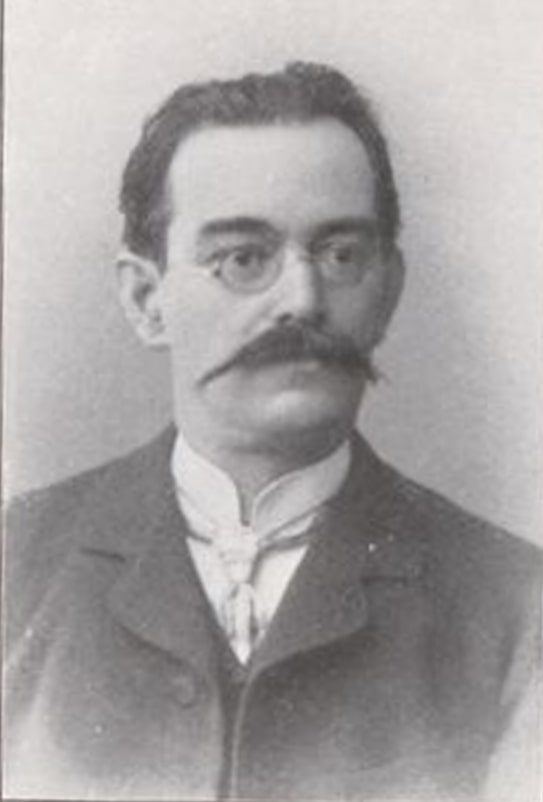Background
Although Zamenhof's stated preference was to avoid any discussion of changes, he was put under considerable pressure, including financial, to respond to the diverse reforms proposed by others. Reluctantly he decided to present a reformed dialect himself and undertook to continue guiding the community, whether or not reforms were eventually agreed upon.
Although Zamenhof initially called his reform a systematic attempt to re-create the language in the light of more than six years of practical experience, scarcely any of the Esperanto community of the time accepted it as a whole. The majority voted to reject all changes. Zamenhof himself later rejected the whole project and referred to 1894 as 'a wasted year'. In 1907 he expressly refused permission to anyone wishing to re-publish the proposed reforms. In 1929 Johannes Dietterle cited this refusal as justification for omitting details of the reform project from his collection of Zamenhof's complete works, Originala Verkaro.
Some of the proposed reforms from 1894 such as replacing the -oj plural with -i, the removal of the diacritics and adjectival agreement were used in the language reform project Ido beginning in 1907, but these were not accepted by the Esperanto community either and Esperanto has changed relatively little since the publication of Zamenhof's Fundamento de Esperanto in 1905.

Esperanto is the world's most widely spoken constructed international auxiliary language. Created by the Warsaw-based ophthalmologist L. L. Zamenhof in 1887, it is intended to be a universal second language for international communication, or "the international language". Zamenhof first described the language in Dr. Esperanto's International Language, which he published under the pseudonym Doktoro Esperanto. Early adopters of the language liked the name Esperanto and soon used it to describe his language. The word esperanto translates into English as "one who hopes".

Esperantujo or Esperantio is the community of speakers of the Esperanto language and their culture, as well as the places and institutions where the language is used. The term is used "as if it were a country."

L. L. Zamenhof developed Esperanto in the 1870s and '80s. Unua Libro, the first print discussion of the language, appeared in 1887. The number of Esperanto speakers have increased gradually since then, without much support from governments and international organizations. Its use has, in some instances, been outlawed or otherwise suppressed.
Esperanto is the most widely used constructed language intended for international communication; it was designed with highly regular grammatical rules, and as such is considered an easy language to learn.

Ido is a constructed language derived from Reformed Esperanto, and similarly designed with the goal of being a universal second language for people of diverse backgrounds. To function as an effective international auxiliary language, Ido was specifically designed to be grammatically, orthographically, and lexicographically regular. It is the most successful of the many Esperanto derivatives, called Esperantidoj.

Novial is a constructed international auxiliary language (IAL) for universal human communication between speakers of different native languages. It was devised by Otto Jespersen, a Danish linguist who had been involved in the Ido movement that evolved from Esperanto at the beginning of the 20th century, and participated later in the development of Interlingua. The name means 'new' + 'international auxiliary language'.
Proto-Esperanto is the modern term for any of the stages in the evolution of L. L. Zamenhof's language project, prior to the publication of Unua Libro in 1887.
Gender asymmetry is an aspect of the constructed international auxiliary language Esperanto which has been challenged by numerous proposals seeking to regularize both grammatical and lexical gender.
Esperanto vocabulary and grammatical forms derive primarily from the Romance languages, with substantial contributions from Germanic languages. The language occupies a middle ground between "naturalistic" constructed languages such as Interlingua, which borrow words en masse from their source languages with little internal derivation, and a priori conlangs such as Solresol, in which the words have no historical connection to other languages. In Esperanto, root words are borrowed and retain much of the form of their source language, whether the phonetic form or orthographic form. However, each root can then form dozens of derivations which may bear little resemblance to equivalent words in the source languages, such as registaro (government), which is derived from the Latinate root reg but has a morphology closer to German or Russian.
The Delegation for the Adoption of an International Auxiliary Language was a body of academics convened in the early part of the 1900s (decade) to decide on the issue of which international auxiliary language should be chosen for international use. The ultimate decision of the committee charged by the Delegation was to adopt the Esperanto language, but with certain reforms. The result became a distinct language known as Ido.
The original word base of Esperanto contained around 900 root words and was defined in Unua Libro, published by L. L. Zamenhof in 1887. In 1894, Zamenhof published the first Esperanto dictionary, Universala vortaro, which was written in five languages and supplied a larger set of root words, adding 1740 new words.
An Esperantido is a constructed language derived from Esperanto. Esperantido originally referred to the language which is now known as Ido. The word Esperantido contains the affix (-ido), which means a "child, young or offspring". Hence, Esperantido literally means an 'offspring or descendant of Esperanto'.
Esperanto II or Esperanto 2 was a reform of Esperanto proposed by René de Saussure in 1937, the last of a long series of such proposals beginning with a 1907 response to Ido with a project called Lingwo Internaciona, later called Antido 1. Esperanto II was one of several languages investigated by the International Auxiliary Language Association, the linguistic research body that eventually standardized and presented Interlingua de IALA.
Adjuvilo is a constructed language created in 1910 by Claudius Colas under the pseudonym of "Profesoro V. Esperema". Although it was a full language, it may not have been created to be spoken. Many believe that as an Esperantist, Colas created Adjuvilo to help create dissent in the then-growing Ido movement. Colas himself called his language simplified Ido and proposed several reforms to Ido.
Esperanto and Ido are constructed international auxiliary languages, with Ido being an Esperantido derived from Esperanto and Reformed Esperanto. The number of speakers is estimated at 100 thousand to 2 million for Esperanto, whereas Ido is much fewer at 100 to 1 thousand.
Esperanto and Novial are two different constructed international auxiliary languages. Their main difference is that while Esperanto is a schematic language, with an unvarying grammar, Novial is a naturalistic language, whose grammar and vocabulary varies to try to retain a "natural" sound. Demographically, Esperanto has thousands of times more speakers than Novial.
The international auxiliary language Esperanto has been mostly stable since its creation, especially as compared to other constructed languages. This is due to the Declaration of Boulogne in 1905, which made the early works of Zamenhof binding; most attempts to change the language have been therefore seen as distinct language projects, and for the most part the Esperanto community has ignored them. The main change in the language has been a great expansion of the vocabulary, largely driven by translations of technical jargon, which is explicitly allowed for by Boulogne. However, there have been more subtle changes to syntax and semantics as the majority of Esperanto authors shifted from native speakers of Slavic and German to other languages, such as French and English. This article considers some of the purposeful changes to the language since Boulogne.
Esperantology, or Esperanto studies, is a special Esperanto linguistics whose subjects are word construction, word assembly, word introduction and transcription of umbrella terms and proper names. Esperantology principles of word construction are exemplary of the principles of necessity and sufficiency which postulate a balance between conciseness and clarity of the word. Regarding word roots, esperantology sets these principles:

The following outline is provided as an overview of and topical guide to Esperanto:

Abram Antoni Kofman was a Russian Esperanto–language poet. Born in Odesa, Kofman was an early supporter of Esperanto, and one of the first Russian Jewish to do so, learning the language in 1889. Kofman was a high-profile member of the first school of Esperanto literature, and had his work featured in the first anthologies of Esperanto poetry. He was responsible for translations of several sections of the Hebrew Bible in both Esperanto and its daughter language, Ido. Kofman also influenced the development of the international religion Hillelism by the creator of Esperanto, L. L. Zamenhof in 1901. Eventually switching languages from Esperanto to Ido, and later Occidental, Kofman purportedly died during aerial bombing in Odesa.






